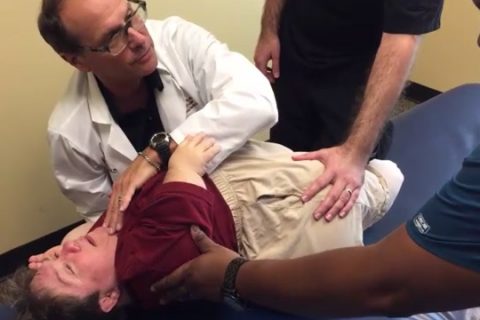
VIDEO CASE STUDY: Biomechanics of Gans Repositioning Maneuver (GRM) for a Little Person with bilateral PC-BPPV
Published on: August 18, 2015
BPPV is among the most common causes of vertigo for children and adults. Canalith Repositioning Maneuvers (CRM) utilizing Epley, Gans or Semont methods or modifications have shown to be highly efficacious for all populations regardless of the specific protocol. In previous Gans Blogs we have shown treatment of BPPV for several adolescents with physical limitations secondary to Spina Bifida and Ostetogenesis Imperfecta.
The patient in this case study has a variety of physical considerations, which significantly reduced (she cannot bend at the waist) her ability to move through traditional treatment protocols without individualized modifications. As can be seen
with a team approach we are able to successfully move her through Gans Repositioning Maneuvers (GRM) treating both ears. We test the horizontal canals and treat her prophylactically as is the AIB protocol. This protocol ensures that a
patient has not undergone a horizontal canal migration during the PC treatment. AIB protocol does not require restrictions post treatment except in certain cases of patients with increased recurrence rates (less than 10% of patients).
References:
1. Badawy et al., (2015), Effect of a Hybrid Maneuver in Treating Posterior Canal Benign Paroxysmal
Positional Vertigo, J. Am. Acad. Audiol, 26:138-144
2. Dispenza, et al., (2012), Comparison of repositioning maneuvers for benign paroxysmal positional vertigo
of semicircular canal: advantages of hybrid maneuver, Am. J. of Otolaryngology, 528-532
3. Roberts RA, Gans RE and Montaudo RL, (2006), Efficacy of a new treatment maneuver for posterior
canal benign paroxysmal positional vertigo, J Am Acad Audiol, 17:598-604
4. Roberts RA, Gans RE, DeBoodt JL, Lister JJ, (2005), Treatment of benign paroxysmal positional vertigo:
necessity of postmanuever restrictions. J Am Acad Audiol 17(8): 598-604